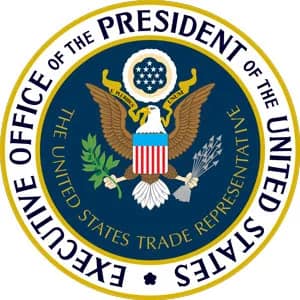The original title at stoneupdate.com:U.S. Trade Rep to Hear Section 301 Tariff Comments
Ali quartz notice – Beginning next month, both proponents and opponents of the contentious Section 301 tariffs on a broad range of Chinese commodities, including natural stone and manufactured hard surfaces, will have the opportunity to voice their opinions.

The action, which was officially disclosed today by the U.S. Trade Representative (USTR) office, comes four years after the first tariff applications and a protracted string of legal actions meant to contest them.
The USTR will launch an online docket on November 15 to gather comments on the duties, as stated in today’s Federal Register, and will take entries through next January 17. Every remark must be submitted on the website.
To help with the preparation of comments, the USTR will also provide a list of questions for the docket. By Nov. 1, those inquiries ought to be accessible at https://comments.USTR.gov, which will also house the entrance to the public docket two weeks later.
The panel will discuss how well the tariffs have affected Chinese policies, how they have affected Americans’ businesses and consumers, and what further possible measures could be implemented.
Comments may potentially contain non-public business information (BCI). Public inspection of the docket’s submissions is permitted, although BCI will be obscured.
As part of the four-year review of Section 301 tariff authorizations, the USTR is providing the comment period. The tariffs were implemented by the USTR in the summer of 2018 with the Trump administration’s approval as part of a plan to negotiate a new comprehensive trade agreement with China.
At that time, the USTR concluded, in accordance with the Federal Register notice, “that the Government of China’s acts, policies, and practices related to technology transfer, intellectual property, and innovation are unreasonable or discriminatory, and burden or restrict U.S. commerce,” which then permits the Section 301 actions.
The tariffs were initially imposed on $34 billion of Chinese imports (List 1) in June 2018, and then an additional $16 billion (as List 2) in August 2018. The tariffs were implemented in stages through specified lists. The USTR then sought to add an additional $200 billion in Chinese exports to the United States each year under Lists 3 (at a 25% rate) and List 4 (at a 7.5%), even though this additional $200 billion is not included in today’s Federal Register notice.
The USTR has the ability to cancel the Section 301 levies at the start of the four-year review this summer, but only if no representatives of any U.S. industries that benefited from the tariffs objected. The USTR declared on September 8 that the tariffs would continue following 489 comments, the vast majority of which supported the measures.
Before the review, however, importers of Chinese goods brought legal challenges against the Section 301 actions, arguing that the USTR did not follow the correct procedures. The U.S. Court of International Trade, where the case is still continuing, received more than 3,600 separate lawsuits as a result of those claims, including more than 30 from hard-surface importers.
The unfair-trade charges imposed on Chinese quartz surfaces and porcelain by the U.S. International Trade Commission since 2018 have nothing to do with the Section 301 tariffs.